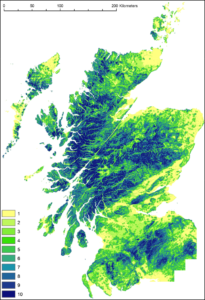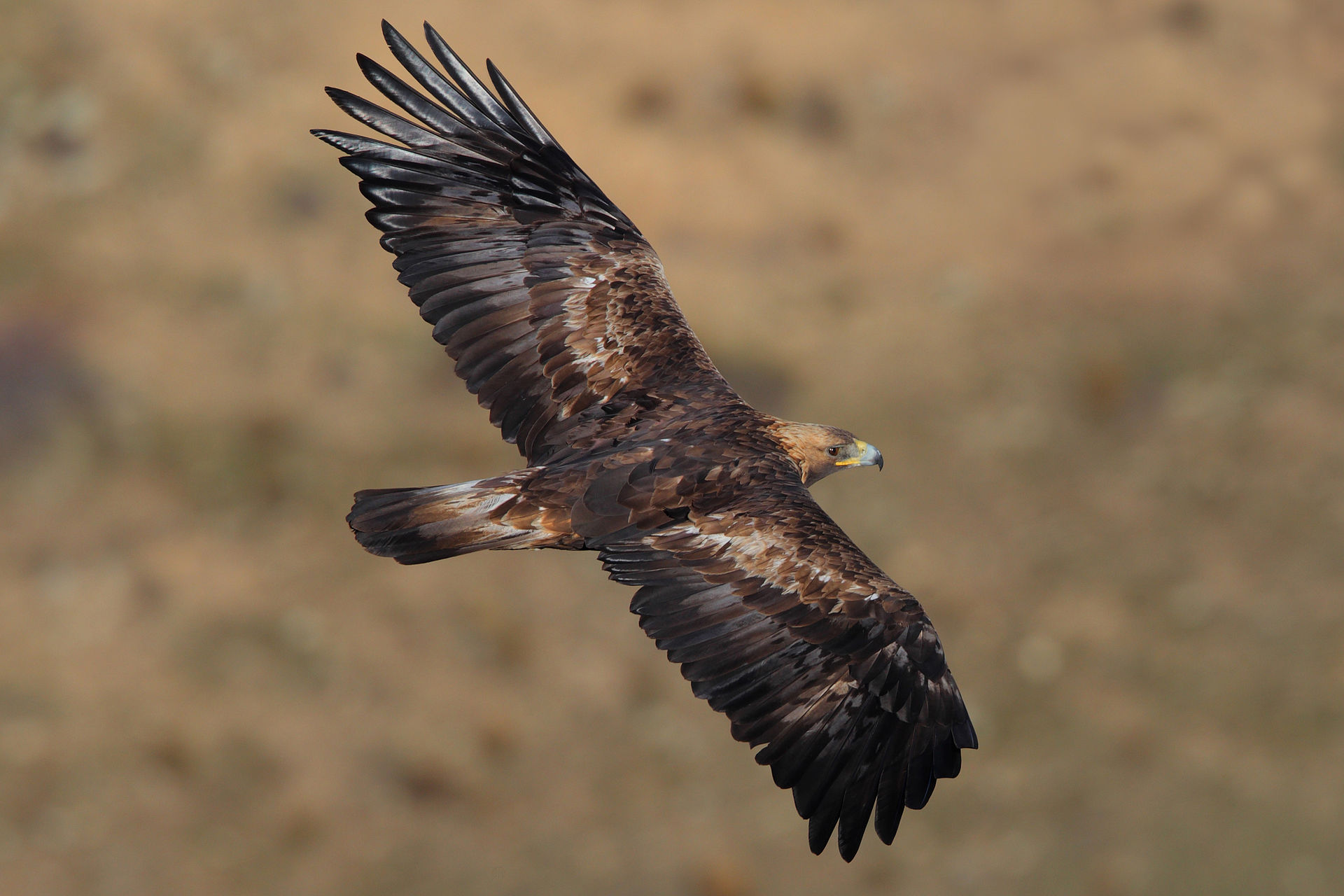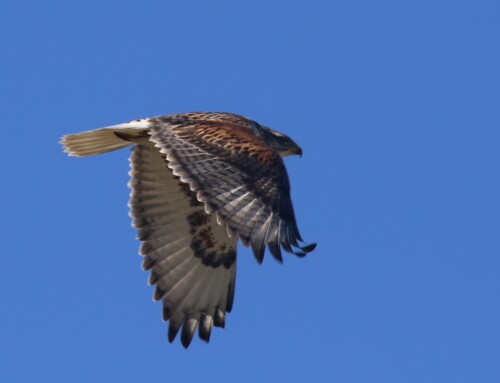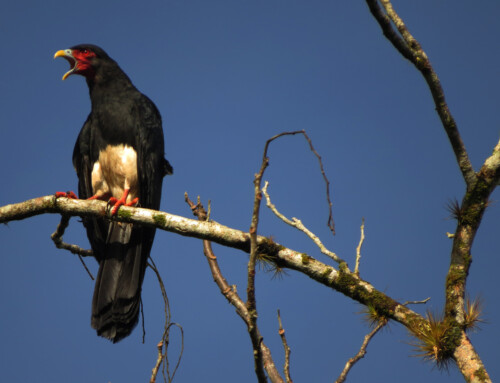LINKED PAPER
A simple topographical model to predict Golden Eagle Aquila chrysaetos space use during dispersal. Fielding, A. H., Haworth, P. F., Anderson, D., Benn, S., Dennis, R., Weston, E. & Whitfield, D. P. 2019. IBIS. DOI: 10.1111/ibi.12718. VIEW
A flying door. That is how a soaring Golden Eagle (Aquila chrysaetos) can be described. With its broad wings and a wingspan of about 2 meters, this raptor seems to glide effortlessly through the air. Many large birds of prey and vultures exploit winds that provide vertical lift, allowing them to reach high altitudes without spending too much energy (Hedenström 1993).
Uplifting Winds
These winds can be divided into two categories: orographic and thermal. Orographic uplift is generated by slopes that deflect horizontal winds upwards. Birds will achieve the greatest momentum close to the ridge. Thermal uplifts are mainly created by solar radiation heating up the lower regions of a slope. As air warms, it expands, leading to a decrease in density and pressure. The air becomes relatively buoyant and rises up the slope, resulting in an uplifting flow.

Figure 1 Mapped predictions of Golden Eagle space use in Scotland from the Golden Eagle Topography model (GET). The legend shows the likelihood of using a particular area, with 1 (yellow) being minimal predicted use to 10 (deep blue) being highest predicted use.
Slopes
The role of slopes in generating uplifting winds suggests that soaring birds will preferentially fly over these areas. To test this prediction, a group of British ornithologists equipped 92 juvenile Golden Eagles with GPS trackers and studied their movement patterns in Scotland between 2007 and 2016. The final model – which they named the Golden Eagle Topography model (GET) – revealed that the birds preferred areas that had a slope of 10° or greater, were at an altitude of 300 meters and were within 350 meters of a ridge. These features point to regions that generate vertical uplift, providing the perfect conditions for the eagles to soar (Katzner et al. 2012).
Baseline
The GET-model accurately predicted the movements of Golden Eagles in Scotland. However, the authors are aware that this model, which is solely based on topography, will not capture every aspect of Golden Eagle habitat requirements. Other features, such as prey availability and nesting opportunities, also play a role (Singh et al. 2016, Whitfield et al. 2007). But because the topography does not change dramatically over time, it can provide a reliable baseline to understand the movement patterns of large raptors.
References
Hedenström, A. 1993. Migration by soaring or flapping flight in birds: the relative importance of energy cost and speed. Transactions of the Royal Society B: Biological Sciences 342: 353-361. VIEW
Katzner, T. E., Brandes, D., Miller, T., Lanzone, M., Maisonneuve, C., Tremblay, J. A., Mulvihill, R. & Merovich Jr, G. T. 2012. Topography drives migratory flight altitude of golden eagles: implications for on‐shore wind energy development. Journal of Applied Ecology 49: 1178-1186. VIEW
Singh, N. J., Moss, E., Hipkiss, T., Ecke, F., Dettki, H., Sandström, P., Bloom, P., Kidd, J., Thomas, S. & Hörnfeldt, B. 2016. Habitat selection by adult Golden Eagles Aquila chrysaetos during the breeding season and implications for wind farm establishment. Bird Study 63: 233-240. VIEW
Whitfield, D. P., Fielding, A. H., Gregory, M. J., Gordon, A. G., McLeod, D. R., & Haworth, P. F. 2007. Complex effects of habitat loss on Golden Eagles Aquila chrysaetos. Ibis 149: 26-36. VIEW
Image credits
Featured image: Golden Eagle Aquila chrysaetos | Juan Lacruz | CC BY 3.0 Wikimedia Commons




